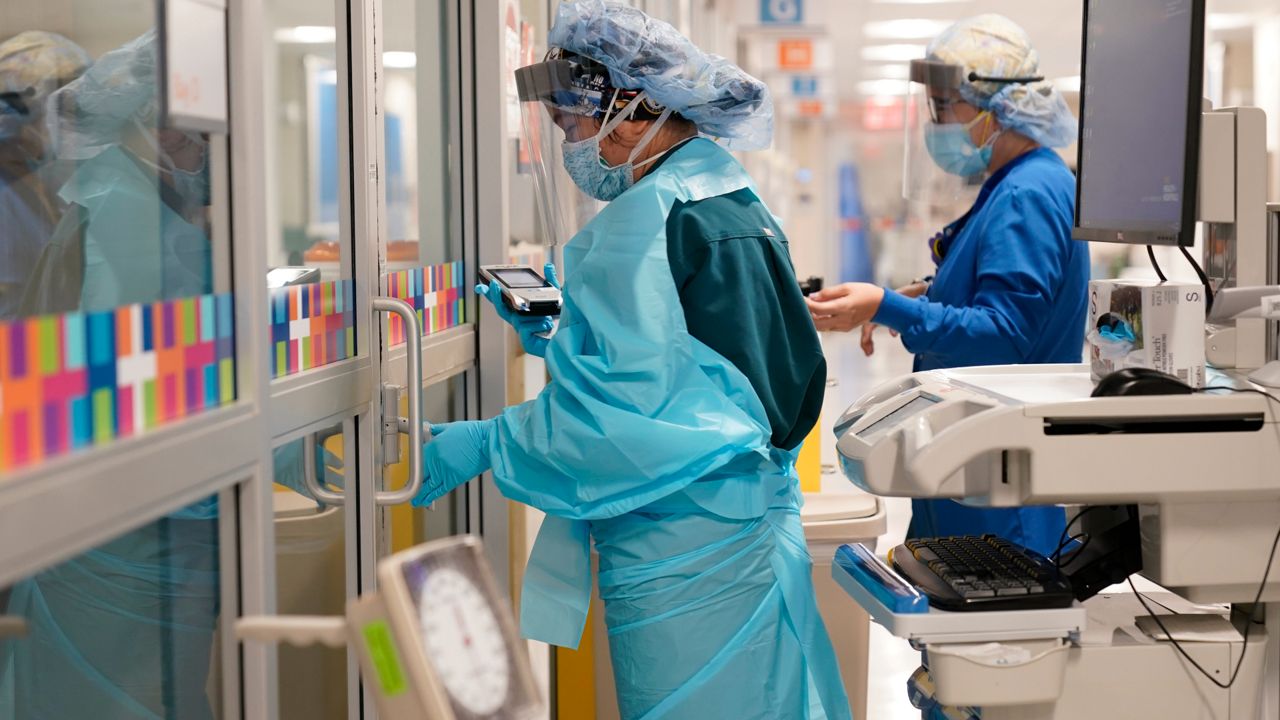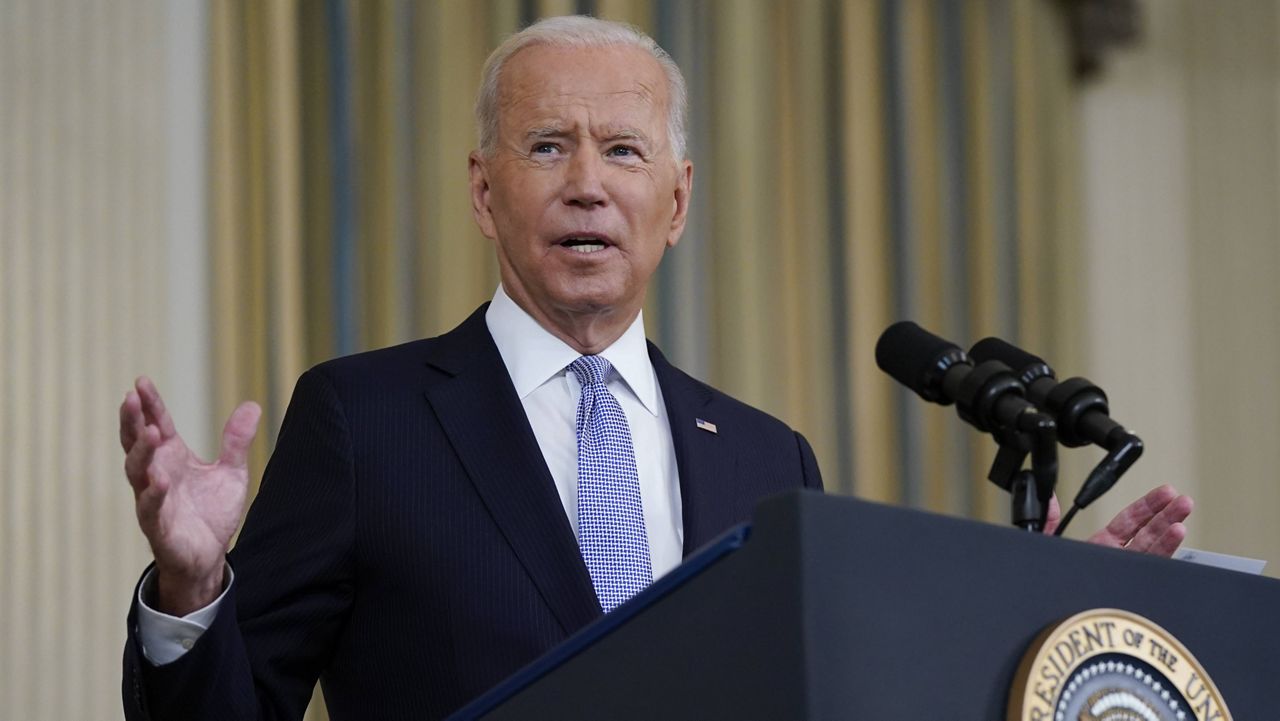OHIO — The state is facing a major problem. Hospitals are running out of available beds in intensive care units, and front line workers are feeling the pressure.
“There are more patients, but fewer health care providers to care for those who are in the hospital,” Gov. Mike DeWine said.
DeWine held a press conference on Thursday to refocus attention on stopping the spread of COVID-19, as delta variant cases continue to soar.
The Ohio Hospital Association wrote DeWine a letter, describing a dire situation across the state.
“In rural southeast Ohio, rural southeast Ohio, half of hospitalized patients are being treated for COVID-19 and two-thirds of the patients are being treated for COVID,” DeWine said.
James Guliano is the vice president and chief clinical officer for the OHA. He said the numbers are startling.
“In mid-July, one out of 100 hospital patients were being treated for COVID-19 and today that ratio is one patient out of every six,” Guliano said. “If we look at our intensive care units, that’s one out of every four.”
In Greater Cincinnati, ICU bed space is currently utilized at 98% of capacity, and medical surge beds are up to 95% used.
Christa Hyson is the assistant director for Emergency Response, Public Information Officer for the Health Collaborative, a health organization that oversees hospitals in greater Cincinnati. She said with a rise in cases, comes a rise in hospitalizations — but the situation calls for increased public awareness.
“We are in the black,” Hyson said. “That means we are in critical staffing operations. That means more nurses have more patients. So, that patient to provider ratio is something of concern, especially for ICUs, because those patients need a lot more care and it’s way more hands on.”
In Greater Cincinnati one in every five hospitalized is COVID-positive and one in every three is in the ICU.
“We’re not in a beds-in-hallways type of situation, but we’re getting very close, it’s crowded,” Hyson said.
If this trend continues the next step would be to stop elective surgeries and procedures — something hospitals want to avoid.
To do so, and to relieve the strain on the hospital systems, Hyson and Guliano both said it’s important for Ohioans to refocus on the protocols that we know so well but may have forgotten over the past few months.
“Hand washing, distancing, masking, vaccinating, are so very, very important when dealing with COVID-19 and the variant, but also as we migrate into influenza season and the RSV,” Guliano said.
DeWine is doubling down on the need for Ohioans to get vaccinated.
“Vaccinations remain our ticket out of this pandemic,” DeWine said. “Vaccinations are the way that we stop our hospitals from being overcrowded. It is the number one way that we can do this.”









